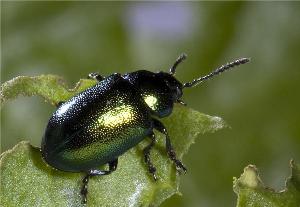The footpads of spiders, lizards and insects feature a bunch of ‘setae’ or ultra-thin adhesive hairs that make them to clamber all kinds of natural surfaces.
Walter Federle and James Bullock, researchers at the University of Cambridge researchers, have reported that the various forces needed to detach these adhesive hairs from the surfaces enable beetles to stick to different surfaces.
 Beetle footpad adhesion study
Beetle footpad adhesion study
According to the study, the researchers observed that the adhesive hairs on the footpad of leaf beetles take three unique shapes such as disk-like, flat or spatula-tipped and pointed. Each hair type performs unique biological function. The adhesive hairs are organized in unique configurations throughout the feet of the leaf beetle. As the adhesive hairs are ultra small in dimensions, Federle and Bullock used a fine glass cantilever to gauge the in vivo stickiness of every adhesive hair. They measured the force required to detach every hair by monitoring the cantilever’s deflection via a microscope.
The study on male beetles demonstrated that the disk-like adhesive hairs attach to the surface with the highest force, and is then followed by spatula-tipped hairs and pointed hairs. Disk-like hairs also exhibit more rigidity than either pointed or flat hairs. Thus, the researchers noted that male beetles use disk-like adhesive hairs to get stronger adhesion on highly smooth surfaces.
According to the researchers, deeper understanding about the mechanism of forces in natural adhesive systems is needed to develop synthetic adhesives.